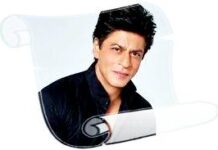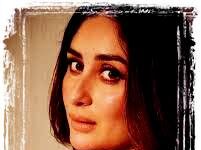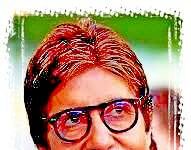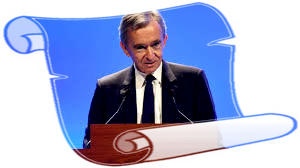Introduction
Ever heard of Bernard Arnault? If the world of luxury were a kingdom, Arnault would undoubtedly be its reigning monarch. At the helm of LVMH (Moët Hennessy Louis Vuitton), his influence stretches across continents, making the conglomerate a titan in the global luxury market. This article will walk you through Arnault’s captivating journey from his early life to building an empire that redefined luxury, touching upon his pioneering moves, strategies for success, and how he faced challenging times with resilience. Fasten your seatbelts, folks – it’s going to be an inspiring ride!
Early Life and Education
Born into a business-oriented family in Roubaix, France, Bernard Arnault was no stranger to the world of entrepreneurship from a young age. His father owned a civil engineering company, which gave Bernard an early taste of the business world.
A young Arnault showed promising intellect, which led him to pursue engineering studies at the prestigious École Polytechnique in Paris, graduating in 1971. Initially immersing himself in the family business, he soon sought larger ventures beyond the engineering realm.
The transition from engineering to seizing the reins of luxury wasn’t immediate, but a series of calculated moves and ventures set the stage for Arnault’s grand entrance into the luxury goods market.
Pioneering Moves: Entering the Luxury Market
The acquisition of Dior in 1985 was nothing short of a masterstroke. This move laid the cornerstone of what would later become LVMH, signifying Arnault’s ambitious vision for the luxury sector.
Arnault’s knack for spotting and seizing opportunities led to strategic investments that expanded the empire. His approach was not just about buying luxury brands; it was about nurturing them to unleash their full potential.
The formation of LVMH in 1987, through the merger of Louis Vuitton with Moët Hennessy, was a bold step that merged prestigious names under one umbrella, setting new standards in the luxury market.
Strategies for Success
Brand acquisitions: Expanding the empire
Arnault’s criteria for selecting brands revolved around heritage, craftsmanship, and uniqueness. The acquisition trail included not just established names like TAG Heuer but also nurturing young labels like Marc Jacobs.
Each acquisition was carefully integrated into the LVMH fold, ensuring they retained their unique identities while benefiting from the conglomerate’s vast resources.
Innovation and craftsmanship
A balance of tradition with innovation has been key. Arnault pushed for digital transformation in luxury retail while maintaining the essence of craftsmanship that defines luxury.
Investments in sustainability initiatives marked a shift towards eco-conscious luxury, reflecting Arnault’s adaptability to consumer preferences and global challenges.
Market expansion strategies
The globalization of LVMH saw the brand make significant inroads into emerging markets, with a tailored approach to cater to regional tastes and preferences.
The digital transformation under Arnault’s watch has been pivotal, recognizing the shift towards online luxury shopping and leveraging technology to enhance customer experience.
Leadership and Management
Arnault’s leadership style is famously decentralized, empowering brand heads to act as entrepreneurial leaders within the LVMH framework. This autonomy fosters creativity and innovation, crucial to staying relevant in the luxury market.
Building a culture of excellence and creativity at LVMH, Arnault has championed a corporate culture that valorizes artistic freedom, sustainability, and talent development.
Challenging Times and Resilience
Facing economic downturns head-on, Arnault navigated LVMH through recessions with strategic foresight, adapting the group’s offerings without diluting brand prestige.
In the face of stiff competition and market saturation, LVMH kept ahead by rejuvenating brands and aligning with contemporary trends, demonstrating Arnault’s agility in responding to market dynamics.
Summary
Bernard Arnault’s journey from an engineer with a passion for the arts to the captain of the world’s leading luxury goods empire is nothing short of remarkable. Under his stewardship, LVMH has not just weathered storms but sailed through them with flying colors, setting benchmarks in luxury, innovation, and sustainability. The future looks bright for Arnault and LVMH, with the legacy of luxury excellence set to continue for generations.
Frequently Asked Questions (FAQs)
How did Bernard Arnault start in the luxury goods market?
Bernard Arnault entered the luxury market through the acquisition of a struggling textile group that owned Dior, strategically pivoting his focus to luxury goods.
What makes LVMH stand out from its competitors?
LVMH’s diverse portfolio, commitment to craftsmanship, innovation, and a carefully crafted balance between tradition and modernity sets it apart.
How does Bernard Arnault select brands to acquire?
Arnault looks for brands with unique heritage, craftsmanship, and the potential for growth, ensuring they align with LVMH’s values and standards.
What is Bernard Arnault’s leadership style?
Arnault prefers a decentralized approach, fostering creativity, innovation, and independent decision-making among his brand leaders.
How has LVMH adapted to the digital age?
LVMH has embraced digital transformation by enhancing online retail experiences, incorporating digital marketing strategies, and leveraging technology to connect with a broader audience.
What are Bernard Arnault’s views on sustainability and social responsibility?
Arnault has increasingly prioritized sustainability, investing in eco-friendly practices and initiatives across LVMH brands, recognizing the importance of responsible luxury in today’s world.

















